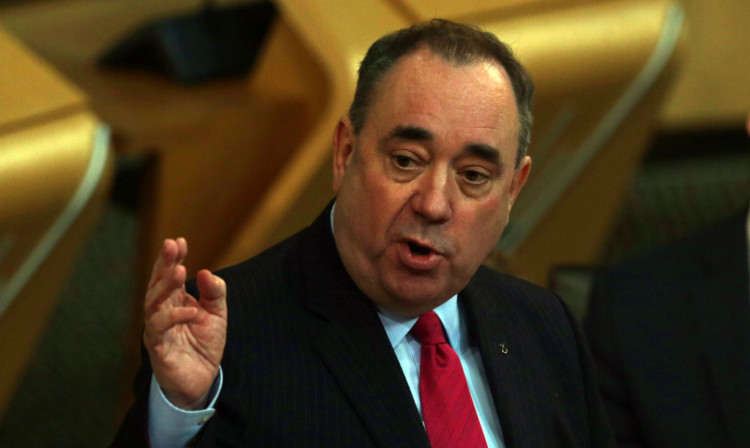Under-fire Alex Salmond has insisted an independent Scotland would remain part of Europe as it negotiated the terms of its membership.
The First Minister said if there was a Yes vote in next year’s referendum Scotland would be “negotiating its position from within the European Union” – citing a letter from the European Commission in support of this.
Opposition leaders at Holyrood had challenged him on the matter after the Spanish prime minister suggested that Scotland would have to apply to join the European Union as a new state.
Labour’s Johann Lamont, Tory Ruth Davidson and Liberal Democrat Willie Rennie all attacked Mr Salmond on the matter at First Minister’s Questions.
Ms Lamont went on the attack, saying: “The Spanish prime minister is being straighter with the people of Scotland than the First Minister.”
Spanish prime minister Mariano Rajoy said that if part of an existing member state became independent, it would be “left out of the European Union (EU) ” and would need to apply for membership as a new state.
“If part of a member state becomes independent, it would be left out of the European Union and it would be good for citizens (in the EU) and Scots to know that,” he is reported to have said.
Mr Rajoy added this meant “EU entry would need to be approved by all 28 member states”.
But Mr Salmond said: “The difference is Scotland would be negotiating its position from within the European Union.”
The First Minister then cited a letter from the European Commission, which he said stated it would “of course be legally possible to renegotiate the situation of the UK and Scotland within the European Union”.
He said that was “reasonably substantial evidence that Scotland as a nation can negotiate its position to full membership within the European Union.”
Mr Salmond told MSPs that the Spanish prime minister had began his statement bystating he did not yet know what the Scottish Government’s independence WhitePaper “which was presented by the Scottish president” had said on the issue.
The First Minister added: “I’m not a president, I’m a first minister and Scotland is not a region, Scotland is a nation.”
